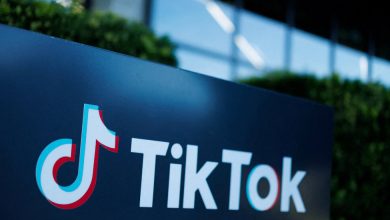How the Student Loan Payment Restart Is Going to Work

The student loan machinery is cranking back to life.
After a nearly two-year timeout, almost 27 million borrowers with federal student loans will be expected to restart their payments in February.
Those loans have essentially been frozen in time since March 2020 because of the pandemic. Most federal borrowers haven’t had to pay a bill, their loans stopped accruing interest and those in default received a break from collections.
The upheaval of the past two years may mean your personal circumstances and financial life look entirely different today. If you’re anxious about making payments again, you’ve got plenty of options — but a limited window to thoroughly evaluate them.
Here’s what you need to know about the restart and the payment plans that might help you.
What’s the first thing I need to do?
Make sure your student loan servicer — the entity hired by the government to collect and manage your payments — can find you. Go to your servicer’s website and verify that it has your latest contact details: email address, mailing address and phone number.
Not sure who your servicer is? Go to StudentAid.gov and locate your account dashboard and scroll down to the “My Loan Servicers” section. You can also call the Federal Student Aid Information Center at 1-800-433-3243.
When will my payments restart? And how?
You should receive a billing statement at least three weeks before your first payment is due, but you can contact your loan servicer before then (online is more efficient) for specifics on what you owe and when payment is due. If you haven’t changed repayment plans, your due date should be the same as before the pause.
This is important: If you were on an automatic payment plan before the pandemic — that is, before March 13, 2020 — you must opt back in. Your servicer should reach out to you about this. If you don’t respond, your payments will not automatically restart.
If you signed up after that date, automatic payments will indeed resume. Borrowers who have continued to make payments — there are about 500,000 of them — don’t have to do anything at all.
If you miss the first payment, don’t panic. Just contact your servicer and make arrangements to become current. Once you are 90 days overdue, however, the servicer will report your delinquency to the major credit bureaus.
I can’t afford my loan payment. What are my options?
There are many, each with different eligibility rules, conditions and mind-numbing details. But you can think about them as coming in three varieties.
Repayment plans calculated over set periods of time: These include standard (fixed payments), graduated (your payments rise), and extended (you pay over a longer time) repayment plans.
Income-driven repayment plans: These plans depend on your income, yielding monthly payments as low as $0. And after a couple decades of payments, whatever balance you’re still carrying is forgiven by the government. These plans will probably be the preferred option for many borrowers who expect to struggle making their payments.
Pause-button options: Borrowers can also request deferment or forbearance, which temporarily put payments on hold — though there can be significant added costs in the long run. With forbearance, payments stop but interest still accrues. If the interest is not paid, it’s added to the loan’s principal balance. Deferment is similar, but subsidized loans — which generally have slightly better terms — won’t accrue interest while they’re paused.
“Forbearance should be a last resort,” said Betsy Mayotte, president and founder of The Institute of Student Loan Advisors, which provides free advice to student borrowers. She suggests reserving forbearance as a short-term solution when something throws your budget off track — a big car repair, for example, or a high medical bill.
Tell me more about income-driven plans.
The rules are complicated, but the gist is simple: Payments are calculated based on your earnings and readjusted each year.
After making monthly payments for a set number of years — usually 20, sometimes 25 — any remaining balance is forgiven. (The balance is taxable as income, though a temporary tax rule exempts balances forgiven through 2025 from federal income taxes.)
There’s a confusing assortment of plans available, and there may even be a new one coming, though probably not for a while. For now, the alphabet soup includes PAYE, REPAYE, I.C.R., and I.B.R. (which comes in two flavors, with the latest version updated to have slightly better terms for newer borrowers).
Monthly payments are often calculated as 10 or 15 percent of discretionary income, but one plan is 20 percent. Discretionary income is usually defined as the amount earned above 150 percent of the poverty level, which is adjusted for household size. “PAYE usually has the lowest payment, followed by either I.B.R. or REPAYE, depending on the specific circumstances of the borrower,” said Mark Kantrowitz, a student aid expert.
There’s a dizzying variety of rules. Consider spousal income.
“REPAYE has a marriage penalty, while I.B.R. and PAYE will use just the borrower’s income if they file a separate return, joint income if they file a joint return,” he said. REPAYE, he said, uses joint income regardless of tax filing status.
Got all that?
These plans aren’t a cure-all. Even though some borrowers may be eligible for a $0 payment, the plans aren’t always affordable for everyone. The formulas aren’t adjusted for local cost of living, private student loans or medical bills, among other things. And people who are eligible for small (or $0) payments will see their balances grow, sometimes dramatically. That can take a mental toll, even if the debt is forgiven years later.
But they remain a more manageable solution for many borrowers.
“Enrolling in I.D.R. now is a great next step, particularly if you lost your job during Covid, or your spouse lost their job and you are experiencing a drop in income,” said Mike Pierce, executive director of the Student Borrower Protection Center.
That’s a lot to consider. How do I choose the best plan?
Analyzing the plans is an agonizing exercise, which is why you should visit the loan simulator tool at StudentAid.gov. It will guide you through the options and help you decide which plan best fits your goals — finding the lowest-payment plan, for example, versus paying loans off as soon as possible.
It is, fortunately, easy to use: When you sign in, it should automatically use your loans in its calculations. (You can manually add other federal loans if any are missing.) You can alsocompare plans side by side — how much they’ll cost over time, both monthly and in total, and if any debt would be forgiven.
For most borrowers, income-driven or extended plans will yield the lowest monthly payment, experts said.
I was in an income-driven plan. What happens now?
You’ll still be enrolled in the same plan. And there’s some good news: All your months of paused payments are treated as if you’ve actually paid, which means that time counts toward the years you must accrue to have your loan forgiven.
Participants in an income-driven plan must recertify their income and family size each year to remain enrolled, and you won’t be asked to do this before August. But you may want to do it sooner, anyway: If your income dropped or your family grew, updating your information will most likely lower your payment. To update your information, visit the I.D.R. application online and select the button next to “Recalculate My Monthly Payment.”
Up until July 31, you will be able to self-certify this information, either verbally or through the StudentAid.gov website. (You’ll need your Federal Student Aid I.D. and password.) Starting in August, your income must be verified — you’ll be given the option to document your income electronically, using a data retrieval tool that works with the Internal Revenue Service.
Doing this is crucial. If you fail to recertify, you risk falling out of the plan altogether, which can have costly financial consequences. Your loan servicer should remind you ahead of time, but be proactive. Make sure you know your deadline and mark it on your calendar.
I was behind on my payments. What are my options?
There’s good news for delinquent borrowers, too: You get a fresh start.
“Come Feb. 1, you will be current,” said Scott Buchanan, executive director of the Student Loan Servicing Alliance, an industry trade group. “Their delinquency was removed.”
That should remove the pressure for borrowers who were in danger of falling into default, which happens if you’re 270 days behind. If you had been delinquent, find out what your payment is expected to be, and if you cannot afford it, consider enrolling in a different repayment plan that will lower your bill.
My loans were in default. What happens to me?
It’s still not entirely clear.
An Education Department spokeswoman said the department is “working to finalize” plans that would help defaulted borrowers when the pause ends.Policies are under consideration that would allow such borrowers to avoid having their tax refunds or child tax credits garnished.
Loans fall into default after roughly nine months of nonpayment, though it often takes a year or more for an account to move into collections. At that point, the federal government can take your tax refund, up to 15 percent of your paycheck or part of your Social Security benefits.
Borrowers generally have a few ways to emerge from default, which they must do before they can enter an income-driven repayment plan. Paying the loans off completely is an option, but usually not feasible. Loan consolidation is another option, or, alternatively borrowers can “rehabilitate” their loans. That involves making nine out of 10 consecutive “reasonable” payments, which your loan holder determines using a formula.
Advocates for student borrowers hope that the Biden administration will provide them with a fresh start by wiping away their defaulted status and making their loans current. That would allow them to avoid the often cumbersome hurdles required to get out of default at a time when loan servicers are likely to be inundated.
Am I eligible for Public Service Loan Forgiveness?
You’re more likely to be eligible now. The Biden administration recently made some major changes to the program, which allows a variety of government and nonprofit workers with federal student loan debt to have any remaining balances forgiven, tax-free, after making 120 payments. Now, hundreds of thousands more borrowers may qualify for relief.
Curious if you’re one of them? Ron Lieber outlined it all in a recent column.
What if I filed a borrower defense claim?
The so-called borrower defense loan discharge program allows borrowers to file claims to have their debt forgiven if they believe they have been defrauded by their schools.
If you have a pending application — or your application has been approved but is not yet discharged — you will not have to make payments when the pause ends. You will remain in forbearance if you find yourself in one of the following situations:
-
You filed an application, but haven’t yet received a response.
-
Your claim was approved, but the loans haven’t been discharged yet.
-
You received a denial letter on, or after, Dec. 1, 2019.
-
You submitted a reconsideration request and the department is reviewing it.
Where else can I get help?
Besides your servicer, groups like The Institute of Student Loan Advisors, known as TISLA, can provide free guidance on what options may best work for you. For New York state residents, EDCAP, a nonprofit focused on student loans, also offers help.And some employers and other organizations have hired companies like Summer, which helps borrowers sort through the options.
Borrowers need to be on high alert because scam artists — offering debt relief and other services for a fee — are already on the prowl. If you’re unsure whether the help you’re being offered is legitimate, hang up, don’t respond to the email — and reach out to your servicer using the number printed on your bill or the government website. You can file complaints through the Federal Trade Commission and your state’s attorney general.
“Consumers need to be very careful,” said Mr. Pierce of the Student Borrower Protection Center. “These people are very predatory and this is the kind of moment they leverage.”




